Arcot Plaza at Chennai is designed to be a sustainable business centre which offers worldclass commercial spaces for its users on an affordable budget. The Architectural Design of the building was a direct response to the climate. The building has an iconic presence on the street and due to the iconic design fetched higher rent per Sq ft. Also, the building consumes 15 percent less energy due to the climate-sensitive design features which reduce the life-cycle cost of the building. [caption id="attachment_32073" align="alignleft" width="300"] North Light Façade - Internal View[/caption] Client Brief: The site (8000 Sq ft.) was located in one of the major arterial roads of Chennai – Arcot Road. The client brief was to create a multitenanted commercial building which would serve the banking sector in the area and maximise the economic potential of the site. The building needed to have an iconic presence in the streetscape of...
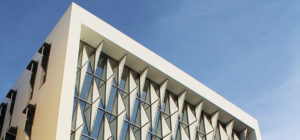
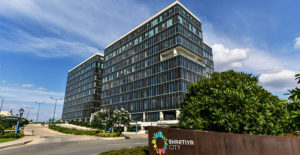
An Office in a Green Oasis Bhartiya Centre of Information Technology, Bengaluru
Bhartiya Centre for Information Technology (BCIT) is a modern, self-contained office complex that prioritises adaptability, spatial flexibility and energy efficiency to achieve a collaborative, socially-oriented workspace for the modern Indian workforce. [caption id="attachment_32719" align="alignleft" width="300"] The Buildings have Breaks Introduced in the Longer Façades in Order to Reduce the Net Glazed Surface[/caption] With Bengaluru becoming one of the fastest-growing hubs for IT development in the past eight years, the 25-acre master plan for BCIT brings back the idea of the green oasis as a vital node of Bhartiya City. Consisting of three towers arranged on the periphery of a 5-acre park, BCIT strives to bring the notion of ‘an office in a park’ to life. The three towers are also linked to each other at the podium level, which is free of any vehicular movement (except fire tender access) making it a haven for pedestrian connectivity and cultivating the idea...
Posted on: 13 Jun 2019
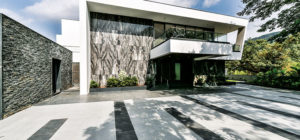
Effective – Exterior Wall Cladding
Cladding is an exterior finishing system a skin to a skin or an additional non-load-bearing layer that serves a dual purpose. It not only helps protect the interiors of the building from harsh weather elements but also makes the outside decorative and attractive. The right cladding helps to maintain the buildings weather-tight and cost-effective, at the same time providing thermal insulation, reducing the temperature variation inside the building. It also helps to improve interior acoustics and daylighting. The cladding can influence the value, sale-ability and safety of the building. So cladding your property effectively is a wise investment that pays both short and longer-term dividends. There are now more cladding systems in the market than ever before. Finding the most appropriate choice may take a little time, but cladding – used creatively and intelligently – is a great way to stamp your own personal style on a property. Ready to...
Posted on: 05 Jun 2019
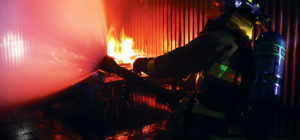
Fire Safety & External Wall Cladding
Most modern high rise buildings we see coming up all around us today have façades and cladding covering almost 60- 100 per cent of their elevations. Architects and designers are in search of the iconic building and are constantly experimenting with different materials to clad their projects. Traditionally, natural stone was the most preferred material used in addition to painted masonry walls. However, in the last two decades, a variety of innovative cladding materials have been introduced by manufacturers to clad buildings which are stronger, lighter and more durable as compared to natural stone. The choices of materials used for cladding high rise building are normally selected on the basis of its appearance, durability, and availability of colors. However, now with the pressure on land availability in urban zones, the need for building taller structures has become the norm. While designing such high rise structures, the designers need to focus...
Posted on: 04 Jun 2019
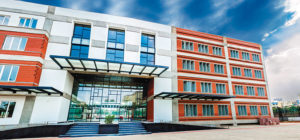
Reflections on a Shiny Façade
Despite a growing obsession with the sleek, all glass aesthetic in architecture, floorto- ceiling glass walls are not a good thing in almost any climate. IFC’s Chief Industry Specialist for green buildings Prashant Kapoor explains why. Windows are essential for any Glass facade, providing enjoyment for people who work in day-lit environments with a view to the outside. So why does a highly glazed building often have the blinds lowered while the sun is shining? Direct sunlight can be beneficial, particularly in cold climates where windows can bring desired passive solar gains to warm a building during the day. Floor-to-ceiling glass curtain walls, however, are not a good thing in almost any climate, no matter how much glamour they may add to the perception of a “five-star” building. Here’s why. Greenhouses in the Sky [caption id="attachment_31555" align="alignnone" width="774"] Johnson Controls’ Asia Pacific headquarters in Shanghai features a controlled use of...
Posted on: 31 May 2019
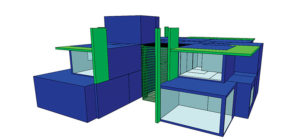
U & SHGC Values: Impact on Energy Consumption
India is the second most populated country in the world with nearly a fifth of the world's population. According to the 2017 revision of the World Population Prospects, the population stood at 1.339 billion. Infrastructure and industries tend to increase by meeting population demand and growth, which will considerably increase the energy demand. Therefore, it would be essential to reduce the energy per capita to meet the demand of the increased population. It’s also essential to reduce the carbon footprint and to preserve the environment. [caption id="attachment_31497" align="alignnone" width="774"] Graph summarising the dry-bulb and wet-bulb temperatures of Bengaluru[/caption] Substantial infrastructure has been developed across India to meet the demands of the growing population. Bengaluru is one of the best examples of development with an increase in population. In this article, we shall be going through how the selection of glazing can play a significant role in the reduction of thermal...
Posted on: 30 May 2019
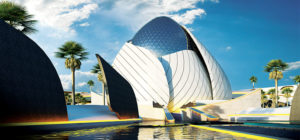
The Glass Age
The production of window glass started in 1836 in a factory in Belgium. Since then, the product has come a long way. Glass has become an inevitable part of any urban building. One of the first milestones was the invention of tempered glass in 1929 by the French glass company Saint-Gobain. The first double glazing was produced in 1947 in Belgium, and it became popular due to its insulation capacities, both thermal and acoustic. During the 1950s, the British manufacturer, Pilkington invented a new method of glass production called float process and since then float glass has become the rage. By the end of the 20th century, 90% of the flat glass used throughout the world were float glass. Enameled and tinted glass followed this. [caption id="attachment_31416" align="alignright" width="150"] ANSHU SHUKLA Deputy General Manager – Design, Kalpataru Ltd.[/caption] With the material science constantly pushing its boundaries, we saw the entry...
Posted on: 29 May 2019
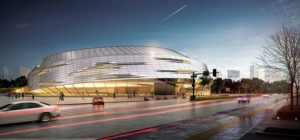
Facades of The Future: Materials & Technologies Revolutionising the New-Generation Façades
No doubt, façades are the most important building element from both the user's and the architect’s point of view. They are the most difficult to design too since the perception of iconic and technologically advanced facades is changing frequently. Designers are researching and experimenting with new and complex façade forms and patterns. The glass aluminium facades are bygones now as we see a lot more new materials in the market such as rusted iron panels, zinc, copper and steel, and even high-pressure laminates. Along with the materials that furnish the look and feel of a building, technologies applied to facades are also changing. Leading-edge technologies play a crucial role in terms of sustainability and operational cost-effectiveness. Truly successful facades do far more than merely project an iconic image, they play a vital role in driving or transforming building performance, engaging with the external environment, significantly enhancing durability, and reducing energy...
Posted on: 28 Mar 2019
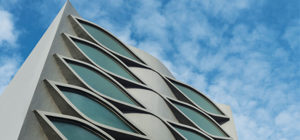
Creating a Sense of Fluidity – Cool Colours Bengaluru
A virtually consolidated built-up area of 2,355 square metre spread across four storeys, serves as an office space and storage for a clothing brand. The multi-level office sits in a tight urban setting in South Bengaluru. Underlining refined details that are unobtrusive, the design of the office space is intentionally minimalist, calm and functional, without any extraneous décor elements. The office space design intent has been to achieve a sense of fluidity in the architectural form that is suited to the client brief. Translation of a sculptural notion into a workable design and construction was a serious challenge that has been bested by the use of digital media and physical models as reference prototypes for execution on site. The effect of fluidity is achieved by articulating windows in a sculptural manner on the building façade. Litany of a sinuous pattern to morph the number of floors is abetted to distort...
Posted on: 27 Mar 2019
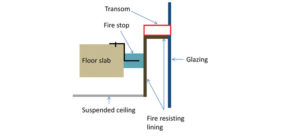
Fire Safe Façades – The Basic Guidelines
The importance of façades with respect to Fire safety cannot be emphasised enough, especially in the context of the spate of fire disasters globally. Let’s consider the current scenario of urban architecture in India - crowded spaces, little or no awareness about Fire safety within occupants and add to this, the chaotic traffic that does little to ensure that external rescue operations are effected within quick time. Now consider the majority of new constructions where the traditional brick walls with small window-to- wall ratios have been replaced by expansive glass, aluminium and stone façades. Fire safety façades, then become a pivotal aspect of design and final construction. Some of the important aspects are: Adequate checks to ensure that only noncombustible materials and fire-retardant materials are used. Horizontal and vertical firestops should be in place to check the propagation of fire within floors and vertically between floors. In case of openable...
Posted on: 25 Mar 2019
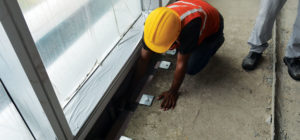
Testing of Facade Materials & Systems Provides a Better Insight
What are the important aspects of façade design for fire safety? Generally, façade design considers the passive design for fire safety and is limited to fire stop and smoke seal. In addition, the design also needs to consider smoke vents in the form of an operable window or actuator for smoke. In Mumbai, it is becoming mandatory to provide fire drenchers specifically for highrise curtain wall buildings. What are the impacts of façade design on the fire safety of buildings? The impacts of façade design are very significant and can be hazardous and unsafe by using combustible materials. The materials used could be due to ignorance or value engineering (VE) options as the façade cost is considered at the fag end of the project. Façade design ideally needs to consider the design parameters for a proper fire stop and smoke seal between the floor and provision for the smoke extraction...
Posted on: 25 Mar 2019
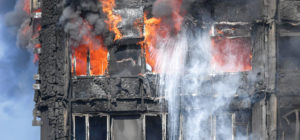
Facade Fire Safety – Need for Performance Testing & Certification
Façade is one of the most vulnerable elements of a building, especially in case of a fire incident. With more attention to aesthetics, cost factor, energy efficiency, eye-catching materials, green concept, etc., considerations of fire safety measures have been slipped under the radar. The scenario has become more complex with the unstoppable mushrooming of high-rise buildings which pose a greater fire hazard. In India, there are numerous fire safety related codes and standards, however, they are scarcely followed. Worse is the case when it comes to facades, it is mostly influenced by the pure considerations of alluring appearance and pricing, and is yet to hit the nail on the head in terms of fire safety norms and testing methods. The majority of the population is still ignorant of the performance of the material and design of the façade play a decisive role in controlling or propagating the spread of fire....
Posted on: 25 Mar 2019
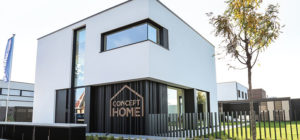
Renson : Opens Brand New Concept Home
Renson is opening the Renson Concept Home just a stone's throw away from its headquarters in Belgium. Concealed behind the façade of this modern family home is a genuine test centre where the Waregem manufacturer of ventilation, solar shading and outdoor living can conduct and monitor experiments under real living conditions. [caption id="attachment_30213" align="alignnone" width="774"] The Renson Concept Home is an experience centre.[/caption] The Concept Home is first and foremost a real life test environment – at a later stage with residents – where a lot of practical data can be gathered. These data are of inestimable importance for research into the development of new technologies and to be enable realistic objectives for energy-efficient, healthy and comfortable living. CEO Paul Renson cites an example: "This home is equipped with no fewer than three different ventilation systems so that they can be compared under exactly identical conditions, for example. But the...
Posted on: 04 Mar 2019
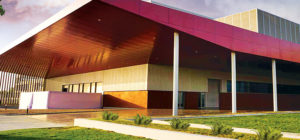
Future Facades will Be ADAPTIVE & RESPONSIVE
Please tell us about your practice. An elegant and efficient built environment is a product of collaboration between creativity and engineering. This multidisciplinary expertise enables CPKA to stand out and produce memorable architecture. Today we are recognised as one of the top 100 architectural firms in the world which bears testimony as much of our meaningful body of work as to our work ethic and philosophy developed over the last 50 years. What inspired you to become an architect? My father has always been an inspirational figure to me for his commitment to design. At a time when terms like “sustainability” and “environment-friendly architecture” were yet to be coined, he emphasised the need for an architecture that responded to the site and climate. For example, the entire Jawaharlal Nehru University (JNU) campus was built on undulating, rugged terrain, and the design reflected this in its planning and choice of materials....
Posted on: 14 Feb 2019
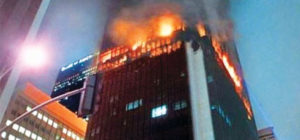
Facade Perimeter Firestop System Need Of the Hour
India is a developing country and also the second most populous country in the world. Our cities are growing taller and taller and the industry is demanding energy efficient and clean looking systems. Traditional construction in India has always been a brick and mortar type of construction. But since last decade, we are seeing a huge increase in highrise structures with facade systems. Every technology and material has its benefits and associated risks. Façade related fire safety risks are one such risk, which are still at premature discussion level and needs a lot more attention. In a practical scenario, we often discuss as to how to respond when a fire occurs. What we often ignore is that how to get such fires contained under one compartment itself and restricting its faster spread without relying solely on fire department. Except very few, many of our states do not even recognise firestop...
Posted on: 14 Feb 2019
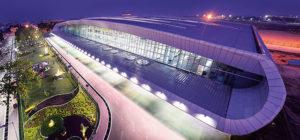
Cladding Choices
Over the years cladding industry has been going through a sea change. Along with a flood of innovative materials and designs introduced in the market, we see the advancement in technologies in application as well. As per a research report Grand View Research, Inc.’, the global cladding market is expected to reach USD 111.1 billion by 2025 and is projected to grow at a CAGR of 2.6 per cent from 2017 to 2025. The increasing construction spending and the development of more efficient building technologies using automated production and installation processes are expected to foster industry growth. Stringent green building regulations and codes such as the LEED certification, and growing demand for energy efficiency in project exteriors, especially for key construction industry participants, including architects and designers, are encouraging investments in lightweight and energy-efficient exterior panels in commercial as well as residential buildings. The choice of cladding has a significant...
Posted on: 12 Feb 2019

